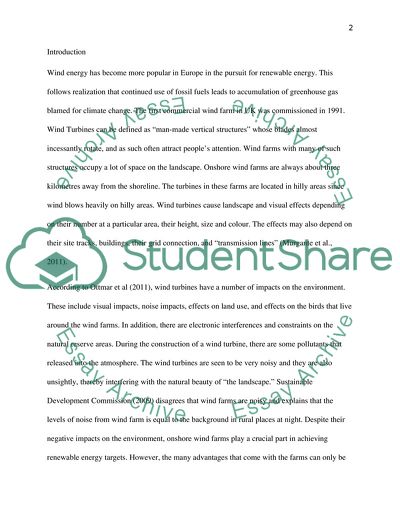Cite this document
(Environmental Studies: Environmental Management Tools Term Paper - 1, n.d.)
Environmental Studies: Environmental Management Tools Term Paper - 1. https://studentshare.org/environmental-studies/1765925-critically-discuss-how-three-selected-environmental-tools-or-methods-could-be-applied-to-minimise-the-environmental-impacts-of-a-40-turbine-onshore-wind-farm-you-should-select-from-the-tools-and-methods-covered-on-the-short-course-eia-sea-environmen
Environmental Studies: Environmental Management Tools Term Paper - 1. https://studentshare.org/environmental-studies/1765925-critically-discuss-how-three-selected-environmental-tools-or-methods-could-be-applied-to-minimise-the-environmental-impacts-of-a-40-turbine-onshore-wind-farm-you-should-select-from-the-tools-and-methods-covered-on-the-short-course-eia-sea-environmen
(Environmental Studies: Environmental Management Tools Term Paper - 1)
Environmental Studies: Environmental Management Tools Term Paper - 1. https://studentshare.org/environmental-studies/1765925-critically-discuss-how-three-selected-environmental-tools-or-methods-could-be-applied-to-minimise-the-environmental-impacts-of-a-40-turbine-onshore-wind-farm-you-should-select-from-the-tools-and-methods-covered-on-the-short-course-eia-sea-environmen.
Environmental Studies: Environmental Management Tools Term Paper - 1. https://studentshare.org/environmental-studies/1765925-critically-discuss-how-three-selected-environmental-tools-or-methods-could-be-applied-to-minimise-the-environmental-impacts-of-a-40-turbine-onshore-wind-farm-you-should-select-from-the-tools-and-methods-covered-on-the-short-course-eia-sea-environmen.
“Environmental Studies: Environmental Management Tools Term Paper - 1”. https://studentshare.org/environmental-studies/1765925-critically-discuss-how-three-selected-environmental-tools-or-methods-could-be-applied-to-minimise-the-environmental-impacts-of-a-40-turbine-onshore-wind-farm-you-should-select-from-the-tools-and-methods-covered-on-the-short-course-eia-sea-environmen.


